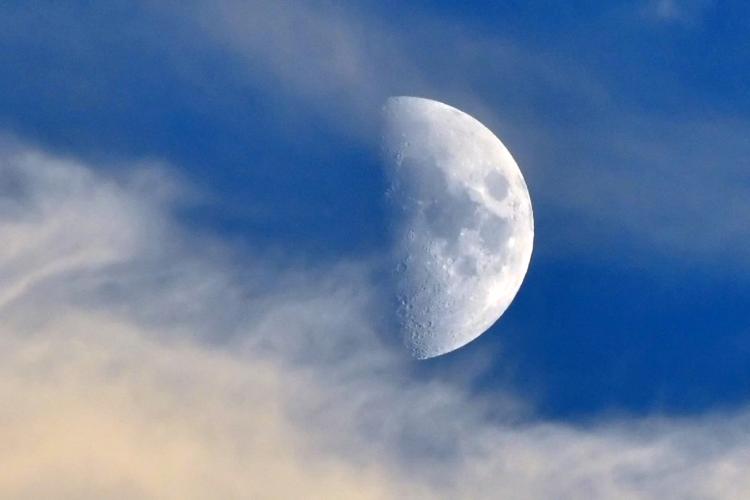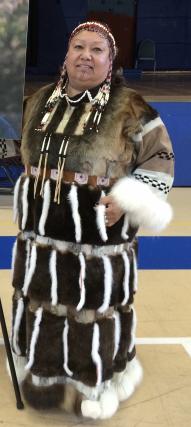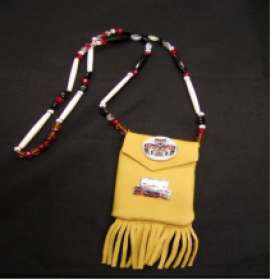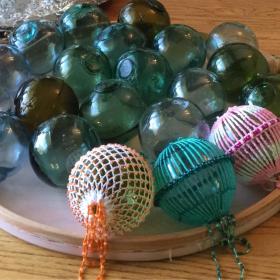This interview is part of the ADRC Indigenous Aging Brain Health Series. It was conducted by Ka`imi Sinclair, PhD, MPH (Associate Professor and Co-Director, Partnerships for Native Health/Institute for Research and Education to Advance Community Health, College of Nursing, Washington State University) and Genevieve Wanucha, MS (Science Writer, UW ADRC/Memory and Brain Wellness Center).
Becky Bendixen is a Tribal Program Specialist at the Northwest Regional Council in Bellingham, Washington. The NWRC’s Tribal Outreach Program serves the Lummi, Nooksack, Samish, Sauk-Suiattle, Swinomish, Upper Skagit, and Tulalip Tribal communities and has successfully linked Native Elders with services and information on aging.
Eight years ago, Bendixen co-created Wisdom Warriors, an ongoing, incentive driven program that provides Native Elders the education, support and tools to make healthy choices resulting in lifestyles that promote self-care, active lifestyles, and longevity. She received the 2017 National Impact Award from the National Indian Health Board for her contributions to enrich and improve American Indian and Alaska Native health at a national level.
In this interview, she generously shares the story driving her passion to improve the health and wellbeing of Elders and of Native communities more broadly. It is one of heartbreak, healing, and the power of connecting to Unangam traditional culture and dance.
*
Would you tell us about your cultural background and the roots of your current passions to improve health interventions for Native communities?
I was raised in King Cove, Alaska, a village of about 800 locals and about 300 transient members of canning crews that came in for salmon and crab fishing seasons. We were really isolated. My mother and her three sisters originally lived on St. Paul Island, the largest of the Pribilof Islands of Alaska. They spoke their language, Unangam Tunuu, until they were six years old, and then they were prohibited from speaking their language and were forced to learn and speak Russian and English. My mother would tell stories of the non-Native colonizers beating her when she went to school because she spoke only her language. Obviously that trauma was ingrained in our Elders, and they wanted to protect us. So, they didn't teach us our language, our dances, or our spirituality.
I think it was around 1990, when I was in my 30s, a gentleman called Ethan Petticrew came from far down the Aleutian Island chain, to King Cove to teach our traditional Unangam dance. We were just fascinated that this dance was a part of who we are. But we didn't know the dance. We had heard stories of it, but we had never learned it ourselves. And I had never seen Unangam dancers before then. My heart was full as I watched Ethan, the dancer leader, speak in their Native language with my Mom, who translated it into English for us. And it was the most beautiful thing I'd ever seen because my niece and all of our children were out on the dance floor, doing our traditional dances, singing our traditional songs, and using our language. There were so many tears in the audience. It was like a part of us was coming back to us that had been taken away for almost two centuries.
When I started getting involved in my culture, it felt like someone had broken away this shell that had been put around me, and I was finally allowed to become a part of my land. I became a part of the earth that I had grown up on. I was finally allowed to be a part of it, because of my culture. And the more I practiced my culture, the stronger I became. It makes me feel like I am finally a whole human being. I am relevant now. I don’t feel like I did before. It's so hard to put into words.
Can you describe Unangam dance?
Our dances are very vigorous. There’s a lot of spinning and jumping. What is very unique about our style of dance is that we use our hands, we use our feet, and we use our voices to tell the story connected to our culture. If you watch our dancers’ hands, you can see the motion of the waves in the ocean. And the wind would be spinning you in circles, because up in Alaska, we have hurricanes all the time. You would see the men paddling kayaks. You would see each movement, and each movement would tell a story. When we are dancing, our ancestors are out there dancing with us.
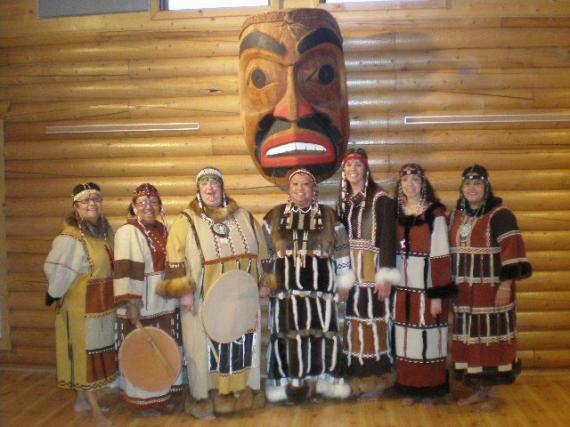
This Unangax dance troupe of people of the Aleutian Islands is called Sngagim Axasniikangin, translated as Dancers of the Dream —"The dream to bring our traditional dances back." Credit: Becky Bendixen
What brought you to Washington and started you on your path to Wisdom Warriors and public advocacy work with Native communities?
I moved to Washington State after 41 years at home. My people, the Pribilof, took part in a canoe journey from St. Paul Island to Port Angeles, Washington. I will never forget when our team of canoes arrived and landed in front of 1,000 tribal people. The tradition is to sing our songs for all. And so, we carried our uluxtax (what you would call a kayak) inside and got out in the middle of the dance floor. None of us knew our traditional songs in our language. We all knew just bits and pieces of some songs. So, we sang a Russian Orthodox Church song. It was beautiful, but it wasn't our song. And it just broke my heart. It was at that moment that I decided that we needed Unangam Tunuu traditions and culture in Washington State.
That's when I formed a 501(c)(3) nonprofit called Northwest Unangam Culture. Over the years, we would hold what we call ‘culture camps,’ where we would bring traditional teachers from Alaska and hold intensive 10-day, 10-hours-a-day culture camps, focusing on dance, history, culture and language. By the end of those 10 days, almost all the participants would have learned their language and history, learned a few songs, and created their dance regalia—ornate, flowing dress garments made by hand just as our ancestors would have done from furs that are indigenous to the islands that we come from. We continued that for many, many, many years, until I lost my parents. When you're grieving, you can’t do spiritual work, dancing, and celebrating. I'm still healing from the loss of my parents. So, we haven't danced in six years. We're just now talking about getting ourselves back together.
Do you find any of those activities to be especially helpful or healthy for Elders?
I really don't see many Elders of any tribe dancing that much. I think it has a lot to do with the historical trauma from having our culture taken from us. But Elders love to see the young people dance. They definitely love to help the children with their language if they still have it. My approach to healing tribal Elders is getting them involved in making traditional crafts. It's a time when they can gather, they can do something that they were taught to do as a child, and they can tell stories. And that's where you get the treasures. The whole room goes silent when an elder speaks about the past. It's incredible.
How did the Wisdom Warriors health intervention program start?
While working with tribal communities at the Northwest Regional Council, my supervisor Shelly Zylstra and I found that there are many evidence-based programs to improve health, but they don't work effectively in indigenous communities. That is because the people who develop these programs come from outside our communities; they’re non-Native. They do not look or talk like us, and they don't know our history. Our local tribal elders who experience chronic conditions, such as diabetes, high blood pressure, and heart disease, wanted a program to help them manage their conditions and one that reflected their culture and values. We decided the best solution was to develop our own program. We created Wisdom Warriors, a culturally adapted version of the 6-week Chronic Disease Self-Management (CDSMP) curriculum that researchers at Stanford University developed in 1996.
The Wisdom Warriors program content is the same as the original program, but we infused it with Native traditions and values, such as making medicine bags, powwow dancing, carving, fishing and more. Wisdom Warriors also honors tribal sovereignty by encouraging tribal nations to tailor the program to fit their own customs and health needs. Wisdom Warriors is now in its 8th year and is an ongoing program in many communities that continue to offer other culturally relevant programs to the Wisdom Warrior “cohorts” that have been established across the US.
Elders wanted a program that would continue on after six weeks, so we developed a plan for each class after they completed the initial Wisdom Warriors chronic disease self-management classes. Every month, participants start with their action plan, which is at the very core of chronic disease self-management. From there, they go into traditional crafts, traditional foods and preparation, and some health activity, such as seated Tai Chi, seated yoga, or just plain stretching; anything that's healthy for the body. They practice every day and they have monthly meetings to celebrate each other’s success in reaching a variety of health milestones, which are recognized with decorative beads worn on the medicine pouches. We now want to work with folks down in Seattle to reach urban Elders.
What is your process of adapting chronic disease management programs for Native Elders?
The first program we indigenized was the CDSMP. We have also done pain management and diabetes management. Last month, we added a Tai Chi intervention from the Tai Chi Institute of America.
To create an adapted version of a program, we do the six-week training workshop in the evidence-based program, and we then teach it our way (i.e., indigenize it). We never lose the key lessons of the programs, but we take the same lesson and make it more relevant to the tribes and their cultures. The people we teach then take the program to their communities. Each tribe designs their Wisdom Warrior program to match their elders’ needs and their elders’ culture. Our goal is to give Native people the tools and techniques to indigenize any evidence-based program to promote health.
Can you describe what it means to Indigenize a health intervention?
Let’s take Tai Chi as an example. I love both standing and seated Tai Chi, but I don't connect with how they've named the movement forms. So, we renamed the forms, using an object that we could all relate to. Here, it was the moon. I made a story about carrying the moon in a basket, to pair with each movement. For the movement called ‘Open and Close’, you are opening your hands and then bringing them back together. Instead, I say, “I want you to reach forward and gather the moon. And then I want you to lift the moon up and out, and then share her with your cousins.” And you do the hands waving in the clouds, sweeping aside the clouds, bringing the moon closer, and putting your moon into the basket. Each movement tells a story of what you are doing with the moon. You are using the moon to bless yourself and the people in your friendship. And the elders absolutely love it. Each tribal community can tailor their own story. The Pima might choose the blooming cactus; other tribes might choose the eagle.
How does Wisdom Warriors benefit the health of elders? For example, we've learned that Dr. Keawe Kaholokula and his team in the Department of Native Hawaiian Health, University of Hawai'i, recently completed a hula intervention for Native Hawaiians with high blood pressure and the program significantly reduced systolic blood pressure.
One of the aims, the health outcome aims, is brain health and the prevention of dementia. We find that Elders who are in this program have increased their physical activity by so many, many, many hours. And they're part of our tagline: Living stronger, Living longer. We have one tribe that has actually reduced Elder visits to the clinic and hospital by 40%. And we see decreases in depression, because at least once a month, they're getting together with the Wisdom Warrior family. They're preparing food together. They're exercising together. They're growing crops together. They're feeding young people with indigenous crops. It's kind of wonderful what’s happening.
Has your personal family experience with memory loss influenced your work?
As I watched my mom's mental decline, they first told me it was
because of her diabetes and then vascular dementia. At that point, I thought so many of our Elders have diabetes, there has to be a way for us to fight that battle. I wanted to make it so that no other family would have to go through what I went through. I wanted people to have accessible education about diabetes and other health issues that would prevent them from ever having half the problems that we have. But I find in tribal communities that we're only just beginning to talk about dementia itself. It's still kind of taboo. The more we talk about it, the more Elders will realize that they're not “crazy.” It's dementia. So, we use Wisdom Warriors to get those messages across to Elders, and then when they go out in the community, they're also sharing good, hopeful messages. •
Cover Photo: Tony Cyphert
